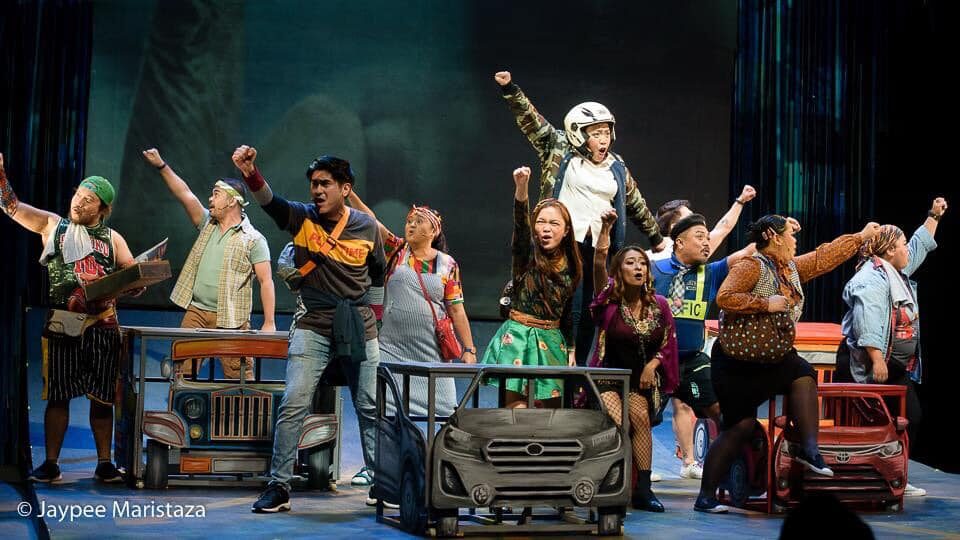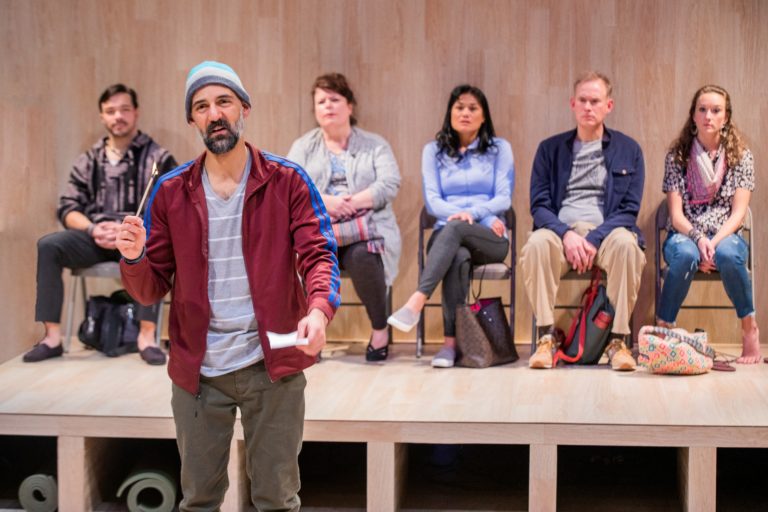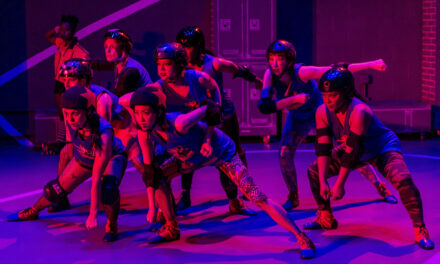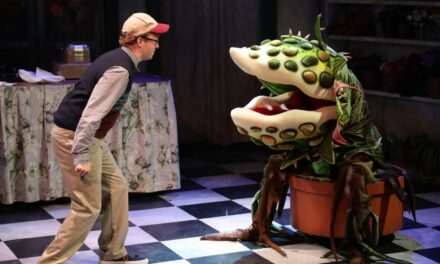“CHAROT” is gay slang, one of the many fluid terms generated by popular lingo, often used as an interjection to express the flimsy nature of a statement and to which the appropriate response should be… charot, or char, its abbreviated expression. The word has permeated popular culture such that in television, radio, and social media, the term is used with impunity.
Philippine Education Theater Association’s (PETA) season-ender derives its title and spirit from this piece of gay slang. In this one-hour and 45-minute play, charot stands for “charter of change,” an obvious reference to the efforts of the lower house and the President to engineer a fundamental change in the constitution toward a shift from the presidential system of government to a federal form. In this play, PETA takes an unequivocally political position, one that exposes how the President undermines the constitution.
The year is 2020 and there is a plebiscite, the country is referred to as PI, the President is Papsy, and Choinah is encroaching on the nation’s economy. The play takes place on plebiscite day, and opens with a ragtag group of musicians calling on voters to exercise their right and make the entire electoral exercise a display of people power.
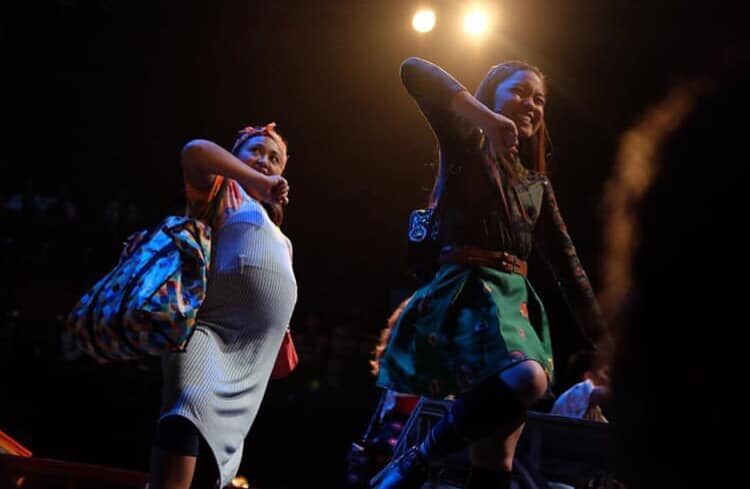
An expecting mother and the millennial girl (a.k.a. first-time/virgin voter) traveling to the poll present (Photo: Charot Musical Facebook Page)
A motley group of voters is traveling to the polling precinct in Ernesto Mangamot Elementary School. An afternoon downpour has triggered a horrendous traffic jam. The polls close at five o’clock but there aren’t any signs the traffic will clear.
Gathered in the chaos of the standstill are a millennial couple with opposing views on charter change, the owner of a small store who is also a pregnant mother, a friendly street vendor, an overbearing traffic cop, a casual employee of a department store, a gay Grab driver who was once an OFW, and a woman club performer with robust breasts now aspiring to get a gig abroad.
As the play progresses, another set of characters intervene to break the impasse: an affluent, philanthropic woman stands in for the middle class, the mayor’s aide represents the links to powers-that-be, and a nun stands for the politically enlightened sector.
They try to extricate themselves from what is now referred to as “carmaggedon.” They need to go to the polling precinct. As they exchange barbs, their characters unravel: the millennial couple stand by their two separate political positions, the mall saleslady displays a militant side as she bewails the oppressive employment policies of a mall tycoon, the small-time businesswoman is the classic wheeler-dealer who curries favor with local politicians, and the silicone-enhanced woman wanting to go abroad makes up for the body fakery with her genuine character.
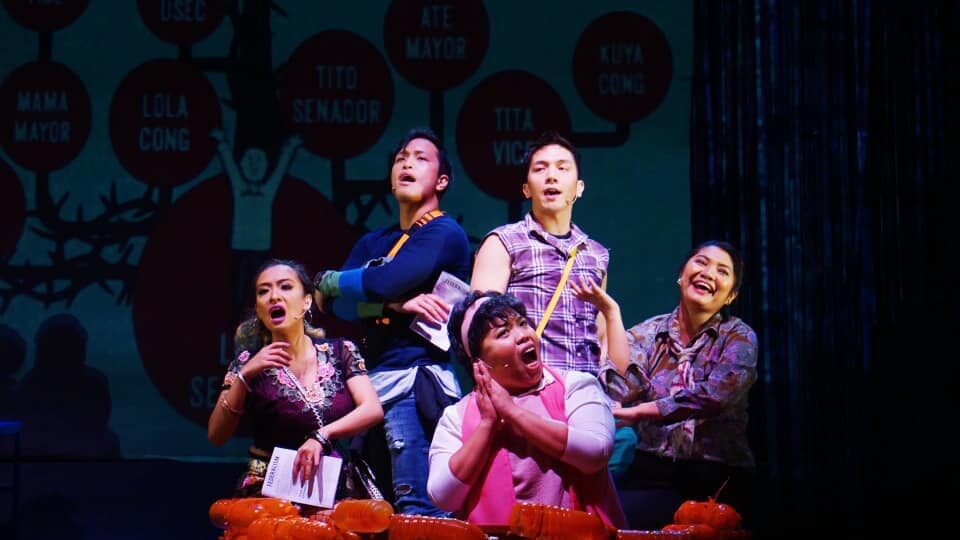
Some voters in an inflatable rescue boat, which appeared out of nowhere, and steered by a politically enlightened nun Sister Mary Joy (Photo: Charot Musical Facebook Page)
Close to the deadline, the mayor sends his aide with a helicopter and picks up those who will vote in support of a charter change. Those opposed refuse to climb the helicopter’s ladder as it hovers above them. They are already settled on the thought that they may have to walk to get to the polling precinct—until an inflatable rescue boat appears out of nowhere, steered by a politically enlightened nun who goes by the name of Sister Mary Joy.
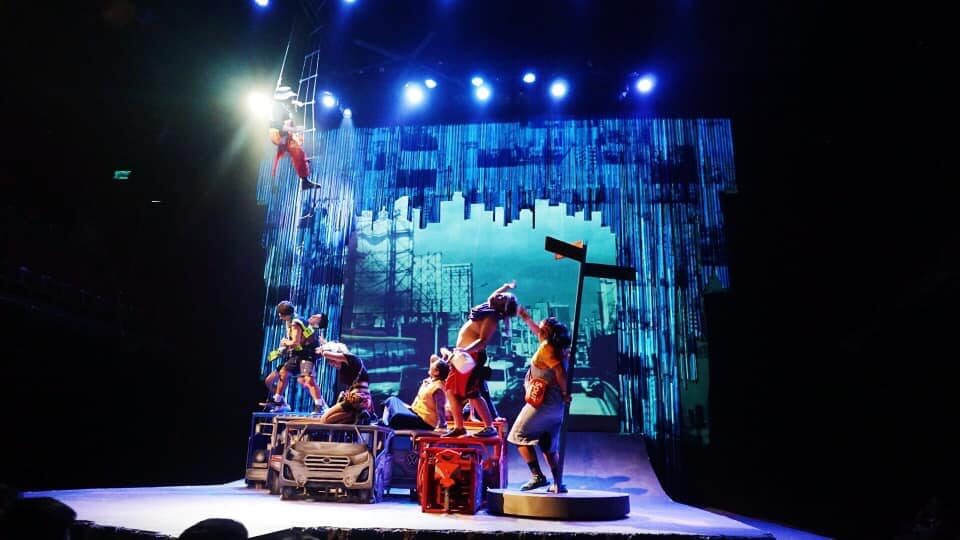
A helicopter sent by the incumbent mayor who is supporting the Charter Change to rescue those who are also supporting the Charter Change (Photo: Charot Musical Facebook Page)
While the helicopter is safely cruising the skies, and the inflatable boat floats its wobbly way through the flood waters (hey PETA, we haven’t forgotten—it’s a flash flood, it ain’t that deep, and it should subside soon, di ba? ), Charot! throws all need for theatrical élan to the wind, and turns unapologetically instructional: up in the skies, the helicopter pilot pulls out a brochure arguing for charter change while in the muddy waters the nun does the same, but arguing against it. The scene has an unlikely mix of pompousness and tedium. It could be said that the pompous are consigned to be tedious. And dull. The scene is the most insufferable moment of the play.
They reach the polling precinct as it is about to close. And as the plot buckles down to its denouement, the pregnant tindera screams as her water bursts, and the silicone-enhanced woman comes to her aid in a moment of I-am-more-than-my-fake-boobs redemptive act. The newborn is raised above their heads like the biblical child lifted from the manger to symbolize hope, and they gather around the child as they utter their desire for a better country and a brighter future for the next generation.
PETA productions always pulsate with ensemble energy that is a theatrical experience in itself. From productions traversing the lines of popular culture such as Rak Of Aegis to the masterly Brechtian oeuvre Galileo, it is an acting ensemble that moves as one in moments of breathless momentum. In Galileo, Joel Lamangan in the title role was the heart, pumping blood through the arterial valves of his supporting actors so each scene gave you a well-nourished theatrical body politic moving in the space and time of the Enlightenment. In Rak Of Aegis, they gyrated and hit the highest notes to keep up with the tradition of “birit singing” with loads of chutzpah. The sense of oneness you see onstage is forged beyond the rehearsal halls and the stage. The acting ensemble goes to a deeper well—a belief that something urgent must be conveyed to the theater-going public, and a conviction that theater is a tool for change and concerted action.
Pondering to Popular Culture
Charot!, with the immense energy of its ensemble and clarion call to protect democracy, is problematic on many levels. PETA misses that a play is first and foremost a written text, and its finest attributes will only come alive on stage if its formal and most fundamental elements are developed in the writing.
Charot! is all physical plot, bare as a herringbone, its playwrights made busy by the need to ferry one plot point to the next, and in the end, piling on one incredible event after another. Splattered in the narrative are many details that test the more mindful viewers’ capacity to exercise “willing suspension of disbelief.” The scenes are unarguably hilarious, verging on slapstick, but still getting the laughs that made for strong audience rapport. However, the banter easily slid into one-upsmanship, where shaming, subtle and outright, became the norm.
Like its other political plays in the recent past, Charot! deployed familiar stock characters as if drawn from social media news feeds. Its use may be understandable—it makes the material accessible to a wide audience, which is a primary consideration for plays that seek to translate understanding of a political situation to political action. However, these characters bear simplified and reductive traits and are devoid of fresh insights.
Charot! is vapid because it panders too much to popular culture, particularly its expressions found in traditional and social media. Theater audiences are also the passive consumers of these forms as they are conveyed in television, cinema, radio, and Facebook, YouTube, and Instagram. Unless the dramatist can consciously ferret out the liberating aspects of popular culture, there will be an inherent problem in relying on popular culture’s use of stereotypes, its predisposition to shame, and the paltry insights that can be derived from the spectacle of repeated peals of laughter. And the audiences of such plays, now able to wangle a good number of hundred peso bills to get to the theater, are once again the passive consumers as they laugh, growl, and chuckle in amusement.
It might be well for PETA to ask itself: What are the political advantages that popular culture can give to political theater, especially the kind that seeks to educate about positive, proactive, and concerted action for social change? How can political theater balance the distinct advantages of stock, easily recognizable characters without reproducing the prejudices and discrimination—in short, the shaming—that is so germane to popular culture?
Throughout PETA’s 50-year history it has pursued socially relevant theater, even at the height of the martial law regime. Surely it can turn to other sources of inspiration aside from popular culture’s paltry forms? Through the past five decades, its theater repertoire has been rich and storied, drawn from sources and influences that are moored in local, national, and global theater traditions. A thorough stocktaking will enable the company to steer its socially relevant theater through wiser and more uplifting dramaturgy. After all, in the metropolis’ mainstream theater scene, it is only PETA that takes on political issues and acts in defense of democracy. We need that now and quite urgently.
MARIA JOVITA ZARATE is a member of the jury of Gawad Buhay, the awards body for the performing arts. She teaches at the University of the Philippines Open University.
This essay originally came out in print and online on Business World. Permission to repost was granted by the author. For the original version, please click here.
This post was written by the author in their personal capacity.The opinions expressed in this article are the author’s own and do not reflect the view of The Theatre Times, their staff or collaborators.
This post was written by Maria Jovita Zárate.
The views expressed here belong to the author and do not necessarily reflect our views and opinions.

